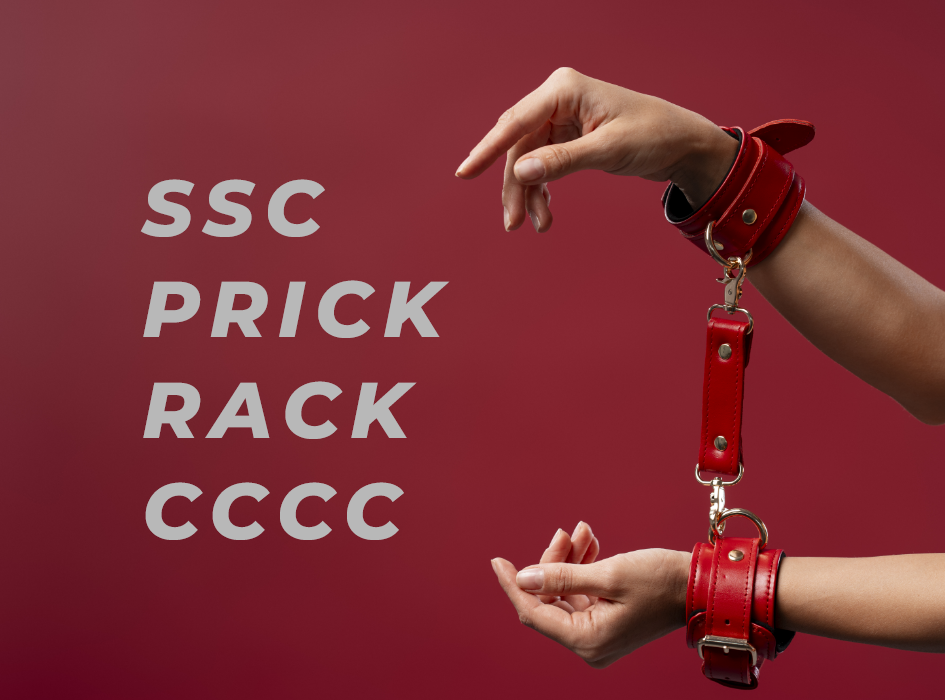When you hear “BDSM,” your mind might go straight to the usual: leather, chains, whips, someone tied up to a bedpost. And sure, those things can be part of it—but that’s just the surface. What many people don’t realise is that kink can also be deeply emotional and even healing.
Yes, healing. Real, mental, emotional healing. For people who’ve faced trauma, who struggle with control, or who are simply looking to build a deeper connection—with themselves or their partners—consensual BDSM can offer something surprisingly therapeutic.
Let’s take a deep, honest look at why kink isn’t just about pleasure—it can also be about power, release, safety, and even growth.
1. Control, But On Your Terms
For a lot of people, especially those who’ve experienced trauma or difficult relationships, one of the hardest things is feeling powerless. Whether it’s emotional manipulation, abuse, or just being ignored—having your control taken away can leave lasting damage.
In a healthy BDSM setup, that control is given back—but in a different way.
Let’s say you’re a submissive in the scene. You choose to give up control. You decide who dominates you, what they can do, how far it goes, and when it stops. That shift—from forced loss of control to consensual surrender—is incredibly powerful. It helps many people feel safe in their own skin again.
On the other side, Doms or Dominants can also experience healing by being trusted to hold power respectfully. That mutual trust can mend a lot of emotional wounds.
2. Consent = Safety + Empowerment
Let’s be clear: BDSM isn’t just wild and chaotic. It’s structured, safe, and honest.
Before anything happens, people involved usually have what’s called a “pre-scene negotiation.” This is where everything is discussed openly—what’s allowed, what’s not, what the safe word is, what aftercare looks like, etc.
This level of communication builds emotional safety, which is something many people never get in their regular vanilla relationships.
In a world where most of us are scared to even say “no” in a conversation, being in a space where you can set clear boundaries—and have them respected—can feel like therapy in itself.
3. Rewriting the Past Through Kink
For trauma survivors, especially those who’ve experienced abuse or control-based trauma, BDSM can offer a way to reclaim those moments—but in a safe, consensual space.
Let’s say someone had a traumatic experience involving being held down or controlled. Through roleplay and consensual power exchange, they might revisit that situation—but this time, they’re in charge of every detail. They decide how it goes. They can stop it any time.
This can be incredibly healing. It’s like telling your past self: This time, you’re safe. This time, you have the power.
Of course, this kind of healing play should be approached with deep care, patience, and emotional intelligence—and ideally with the support of a kink-aware therapist if heavy trauma is involved.
4. The Role of Aftercare
If you’ve never heard of “aftercare,” let me introduce you to one of the sweetest, most emotionally intelligent parts of BDSM.
After an intense scene—whether it’s physical, emotional, or both—people often feel mentally drained, shaky, or even teary. This is where aftercare comes in. It could be cuddling, sharing water or chocolate, a gentle massage, words of affirmation, or just sitting together quietly.
Think of it like emotional first aid. Aftercare reminds both people that what happened was safe, consensual, and part of a shared experience. It helps re-ground you, especially after intense vulnerability.
And honestly? Most of us could use a bit more of this kind of emotional support in our daily lives too.
5. Non-Sexual, But Deeply Intimate
Another myth about BDSM? That it’s all about sex. It’s not.
In fact, many kink scenes don’t involve any sexual activity at all. It can be about discipline, dominance, being seen, feeling safe, or simply expressing parts of yourself that don’t get airtime in regular society.
That’s why BDSM can feel so emotionally rich—it’s about connecting with yourself and your partner on a level that’s raw, real, and deeply human.
6. Healing Doesn’t Mean “Fixed”
This part is important: kink can support healing, but it’s not a replacement for therapy. If you’ve been through trauma, anxiety, or depression, working with a professional—especially one who is sex-positive or kink-aware—is vital.
Think of BDSM as a possible part of your emotional toolkit. One that, when practiced safely and with mutual respect, can boost self-esteem, create deep emotional connections, and help rewrite old stories into new, empowering ones.
Final Thoughts
Kink isn't just about pain or pleasure—it’s about possibility. The possibility of healing, of discovering parts of yourself, of building trust, of being fully seen and accepted.
In a world where we’re often told to hide our desires, mute our emotions, or “be strong” all the time, kink offers something beautifully different: a safe space to be soft, to be held, to explore, and to grow.
And sometimes, that’s exactly what healing looks like.
Related posts
-
Acronyms of BDSM : A Look at SSC, RACK, PRICK and CCCC
BDSM acronyms have emerged and been debated over a time as away to protect BDSM......
-
Is It Common to Lose an Erection When Wearing a Condom?
Have you ever been ready to go, but lost your erection when putting on a......
-
Is the Idea of a Cuckquean Rooted in Myth or Real-life Practices?
A cuckquean is a woman whose husband is unfaithful, often with her knowledge and sometimes......


